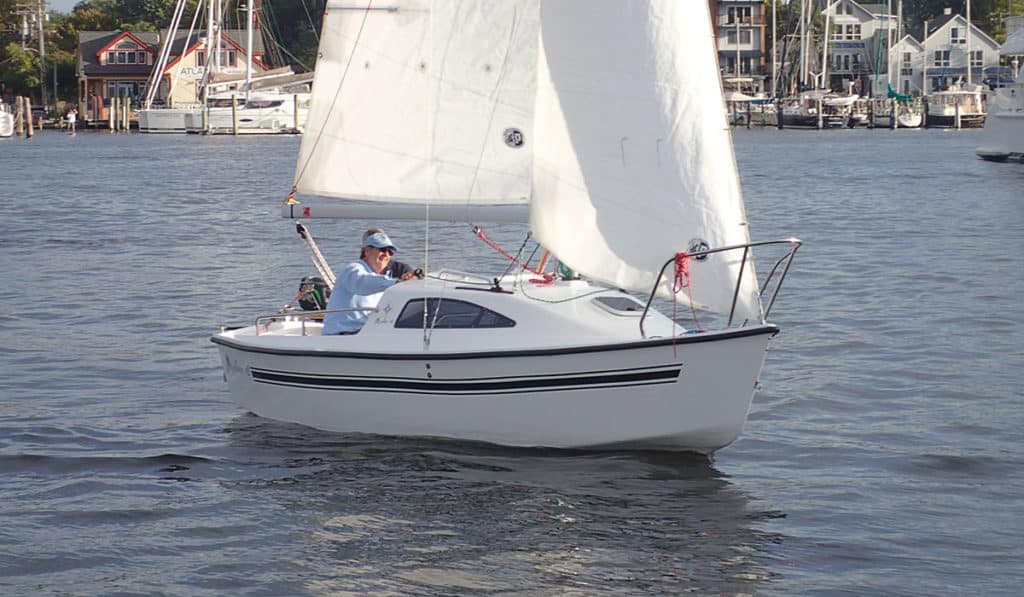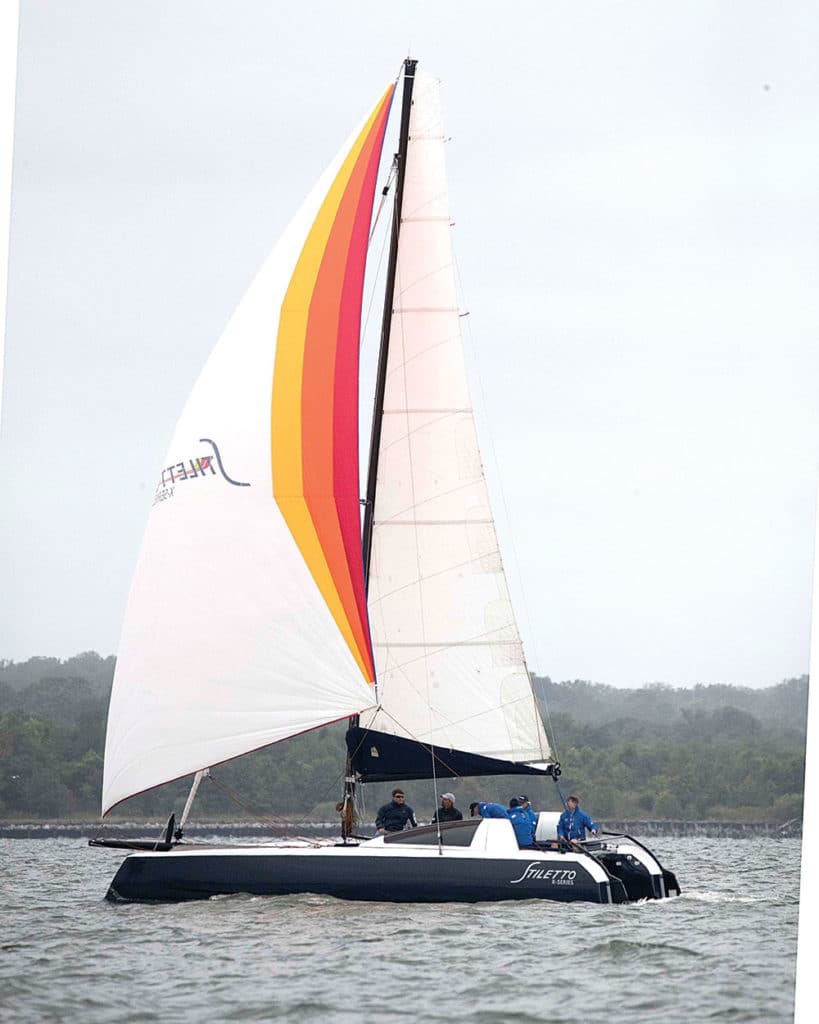
Most of the new sailboats I look at in a given year have me filling my notebook with lines’ worth of creature comforts, electronics packages and long lists of options, from air conditioning to windows that darken at the flick of a switch. So that’s why a pair of simple sailboats — each a throwback in its own way — sort of stood out from the crowd at last year’s U.S. Sailboat Show in Annapolis, Maryland.
At first glance, the new Stiletto-Xc and the Malbec 18 are very different beasts. Heck, the former has two 30-foot hulls built from exotic fibers and resins, and the latter is a monohull and about two-thirds the size.
But the boats share a “keep it simple” credo, and both are the products of builders who’ve reached to their pasts to enlighten the future.
Stiletto catamarans were built in Florida from 1976 to 1986, and attracted a cultlike following. Known for their rocket-ship looks, including tear-shaped companionway pods, they performed admirably as spirited daysailers or outright racers. They could be parked on a beach, and whole families could sleep topside, enjoying the night air after a day of thrills on the water.
In 2016, a group of Stiletto owners and devotees licensed the brand, secured a factory in Columbia, North Carolina, found financing and hired multihull designer Doug Schickler to freshen the concept. The ultimate goal is to build a foiling cat, the Xf, but in the interim, the Stiletto-Xc (“c” is for cruising) was developed, aimed to appeal to a wider audience.
The Xc is 30 feet long, built from Kevlar and Nomex honeycomb coring and epoxy resin. The boat is designed to be trailered and, like its predecessor, sailed off the beach, if desired. With 4-foot daggerboards raised, it floats in a foot or less of water. Accommodations below in the hulls are minimal: a mattress for sleeping in one, a simple galley and head opposite.
Hull number one was introduced in Annapolis, and was still a bit of a prototype — but what a hoot to sail. A traveler, which spans the width of the transom, provided excellent control of the mainsail. The jib is intended to be self-tacking, but was rigged with sheets and leads the day we went out. Just as on a beach cat, tacking — backwinding the jib to blow the bow around — took a little getting used to, but once mastered, it was off to the races. In maybe 10 knots of breeze, the speedo hovered in the low-7 range. As the wind petered out, we popped a chute and gained another half a knot as we headed for the barn.

A base boat costs just shy of $90,000; set up with a 9.9 hp Honda outboard and a few other options, the boat we sailed had a sticker price of $120,000.
The Malbec 18 is built by Ventura Sport Boats, whose owner, Ken Lange, has a boatbuilding resume that includes a number of pocket cruisers, including the popular West Wight Potter. The 18-footer was designed by Heraldo Norbert Ruesch and first built in Argentina. Lange purchased the molds, made some modifications, and began manufacturing the boat as the Malbec in Oxnard, California.
His goal: Produce a boat that can sleep four, and sell it for less than $20,000. Adding a small outboard and trailer tacks another four grand onto the bill.
“I say hats off to the builder because I think the whole idea of getting a boat to market at that price is something that our industry as a whole is really lacking,” said Boat of the Year judge Ed Sherman.
There were three aboard when we took the boat for a sail in nearly calm conditions, which is too bad. Had we had a little more breeze to work with, or a lighter load, I suspect the ride might have been lively.
Below, there are indeed bunks for four in a cushioned 6-foot-long V-berth and on settees to either side. A small table can be mounted for meals, and there’s room for a simple camp stove, cooler and water jug. There’s even an option to add an electrical panel and battery for night sailing, if desired. Lange has spruced up the fiberglass interior with a blue-fleck coating; a large companionway hatch lets in ample light and provides headroom.
A 4-foot centerboard with 300 pounds of lead gives the boat a bit of stiffness when deployed; raise it up and you can float in 10 inches of water.
Many a sailing family has gotten its start on just such a vessel. To be able to do it for less than 20 grand and still enjoy that new-boat smell, well, that’s saying something.








